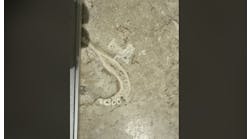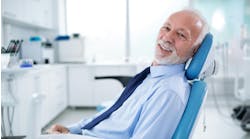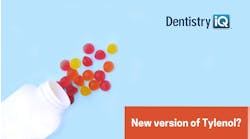As the health-care landscape shifts toward preventive medicine, dental hygienists find themselves at the forefront of transformative changes within dentistry. In some states, an additional licensure avenue empowers hygienists to redefine the oral health-care model through dental hygienist-owned practices. In the state of California this is known as a Registered Dental Hygienist in Alternative Practice (RDHAP).1
Also by the author … Professional advocacy: 4 strategies for success in dental hygiene
What is an RDHAP?
RDHAPs have the ability to practice without the direct supervision of a dentist. This autonomy increases access to care in underserved areas, including schools, hospitals, foster homes, nursing facilities, and more. RDHAPs are able to set their own schedules, determine the time allotted for each patient, and lead their practices with a preventive, patient-centric approach.
The scope of practice for RDHAPs continues to evolve. In 2021 the scope of practice expanded, allowing RDHAPs to administer local anesthetic without direct supervision of a dentist.
“A licensed registered dental hygienist in alternative practice (RDHAP) may perform soft tissue curettage and administer local anesthesia in accordance with the provisions of this section. The RDHAP shall:
- Consult with a California licensed dentist to authorize the use of soft tissue curettage or local anesthesia for each patient to be treated by the RDHAP in local anesthesia or soft tissue curettage. The consultation shall be documented in the patient’s chart and include, without limitation, the date of consultation, name of consulting dentist, and the consulting dentist’s California license number.
- Have the physical presence on the premises of one additional individual trained in basic life support and qualified to administer cardiopulmonary resuscitation during an emergency when soft tissue curettage or local anesthesia administration will take place. For the purpose of section 1926.01 (b) "immediately available" means physical presence.
- Have access to portable oxygen administration equipment to assist with administration of basic life support.”2
First dental board-approved RDHAP program
West Los Angeles College was the first dental board-approved RDHAP program in 2002.3 The college offers a comprehensive four-month RDHAP program, priced at $4,500. California State Law and Ethics Written Examinations may be taken upon completion of all state and RDHAP program requirements.
RDHAP program requirements
Requirements to enter the RDHAP program include:
- Holding a California license as a registered dental hygienist
- Clinical practice as a dental hygienist for a minimum of 2,000 hours
- Holding a bachelor’s degree or transcripts demonstrating the equivalency of 120 college semester units
For dental hygienists aiming to expand their professional scope and achieve more autonomy, pursuing additional licensure options like RDHAP could be an ideal solution. Obtaining this licensure opens the door to hygienist-owned practices, which increases access to care and promotes collaboration between dental hygienists and dentists.
You may also be interested in … Growing your dental hygiene career path through medical-dental integration
Editor’s note: This article first appeared in Clinical Insights newsletter, a publication of the Endeavor Business Media Dental Group. Read more articles and subscribe.
References
- Nathe C. The innovation of the RDHAP. RDH magazine. February 13, 2015. https://www.rdhmag.com/career-profession/article/16405400/the-innovation-of-the-rdhap
- Title 16, California Code of Regulations. Dental Hygiene Board of California Department of Consumer Affairs. Order of Adoption. State of California Office of Administrative Law. February 10, 2022. https://www.dhbc.ca.gov/lawsregs/2021_1230_04s_approval.pdf
- How to become a licensed dental auxiliary in California, Registered Dental Hygienist in Alternative Practice (RDHAP), application instructions. Dental Hygiene Board of California. State of California. 2023. https://www.dhbc.ca.gov/applicants/becomelicensed_rdhap_appinst.shtml
Britt Glauz, BSDH, RDH, has 10 years of experience in the dental field. With three years of clinical practice as a dental hygienist, Britt has become an advocate for hygienists worldwide. As the creator of BrushwithBritt, she uses her knowledge and expertise to educate, empower, and motivate hygienists. She has over 79,000 followers on TikTok, 53,000 followers on Instagram, and a podcast with over 55 episodes. She is dedicated to advancing the careers of dental hygienists through interprofessional collaboration and medical-dental integration. Contact her at [email protected].






